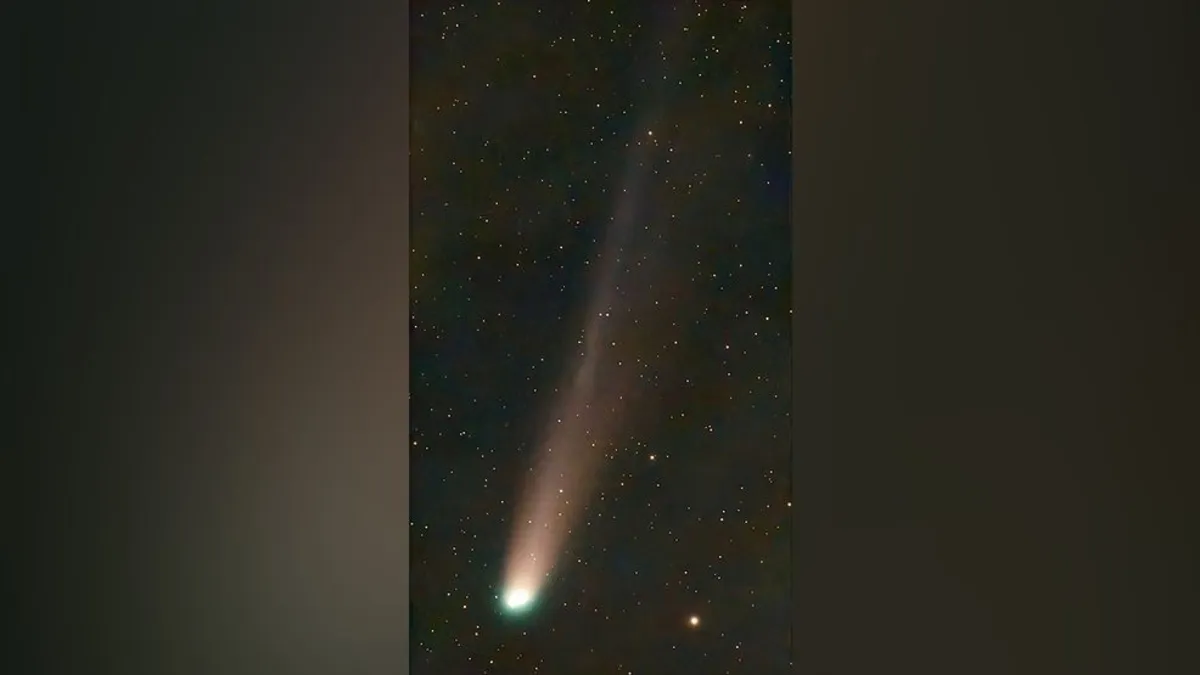
Space is a realm filled with astonishing surprises, and one such marvel has captured astronomers' attention this year. Initially discovered on January 3, 2023, by astronomers from the Mount Lemmon Survey in Arizona, what was first thought to be an asteroid has now revealed its true identity as a comet. This celestial object, known as Comet Lemmon (C/2025 A6), has developed a tail as it approaches the sun, showcasing the telltale signs of a comet.
Comet Lemmon is set to reach its closest approach to Earth on Tuesday, March 21, 2023, at a distance of approximately 28.6 million miles. As this icy visitor draws nearer, astronomers anticipate that it will become visible to the naked eye. For those located in the Pacific Northwest, there’s a chance to spot the comet low in the northwest sky approximately 90 minutes after sunset.
According to Jim Todd, the director of space science education at OMSI, viewers should look for a faint and hazy “cloud” in the sky. The comet's coma, which surrounds its nucleus, is expected to exhibit a greenish hue, while its tail will appear faintly blue. Fortunately, the comet's closest approach coincides with a new moon, providing dark skies that will enhance visibility without interference from moonlight.
However, one potential drawback is the unpredictable weather typical of this season. Current forecasts from our weather team suggest that Portland may experience mostly sunny skies on the night of March 20, which could allow for a glimpse of the comet. As clouds are expected to increase on March 21, skywatchers will need to keep an eye on the weather reports. For the latest updates, tune in to KATU News.
While some may be eager to catch a glimpse of the comet right now, it’s essential to remember that weather conditions can greatly impact visibility. If you're hoping to see Comet Lemmon with the naked eye, consider using binoculars or telescopes for a better viewing experience. The comet, measuring around 1.25 miles in diameter, is currently located in the constellation Canes Venatici and is about 91.4 million miles from Earth.
On October 20, 2023, Comet Lemmon will transition into the neighboring constellation, Bootes. If you are familiar with the kite-shaped formation of Bootes, look for the comet approximately halfway between the tip of the kite (the star Beta Bootis) and the bright reddish star Arcturus, which is the most luminous star in that area of the sky.
Experts like Todd predict that the comet may brighten to a magnitude of 3 or 4, making it easier to spot with the naked eye. However, light pollution can hinder visibility, so escaping to darker areas away from city lights will significantly improve your chances of catching a view of this astronomical wonder. The Sky Live reports that the comet has already brightened to a magnitude of 4.8, which is generally within the observable range for most viewers.
Comets are fascinating celestial bodies composed of ice and dust that orbit the sun. As they approach the sun, they begin to experience its heat, causing the ice to convert into gas and form a visible coma and tail. To fully appreciate this spectacular phenomenon, it’s essential to find a location with clear skies.
If you happen to miss Comet Lemmon during its close approach, you'll have to wait until the year 3175 for another opportunity to witness its return, according to Astronomy Magazine. So, grab your binoculars, find a dark spot, and enjoy this remarkable event in our cosmic neighborhood!